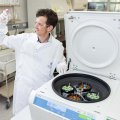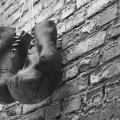University of Queensland and Department of Environment researchers and students have witnessed what is believed to be a record mass nesting of green turtles on Queensland's Barrier Reef.
They say that on Raine Island, in Queensland's far north, the turtle nesting density was so thick in places that turtle shells formed unbroken lines of 'cobblestones' in 30 to 40 metre stretches at night.
The researchers were undertaking a 10-day scientific expedition to Raine Island to help conserve land and marine species.
The nine-person expedition was organised by the Raine Island Corporation, which sponsored the project.
Raine Island, a 28-hectare coral cay, hosts the world's largest green turtle rookery, and is the principal seabird breeding island of north-eastern Australia.
Expedition members expected to find 4000 to 5000 turtles a night on the beach, based on past research. However, as many as 14,500 were counted at night during the nesting season, possibly because of favourable water conditions created by two converging equatorial Pacific weather events, El Nino (with unusually warm ocean temperatures) and La Nina (unusually cold temperatures).
Expedition members included University of Queensland animal behaviour and welfare expert and Corporation scientific committee chair Associate Professor Judith Blackshaw; University PhD students Tim Jessop, Mark Read and Mark Hamann; and Duncan Souter and Christine Clegg, who recently completed University of Queensland bachelor of science (honours in zoology) degrees. The team was led by John Cornelius, of the Queensland Department of Environment in Cairns.
'We selected so many University of Queensland researchers because the University is regarded as a centre of expertise in turtle and coral programs,' Dr Blackshaw said.
'Students receive supervision from sea turtle and reptile research leaders such as Dr Col Limpus, an adjunct professor in zoology, and maritime manager in the Department of Environment, and Professor Gordon Grigg, the head of the University's Zoology Department.'
The University also housed one of the strongest turtle genetics research groups in Australia, led by Dr Craig Moritz.
'Mark Read, an experienced turtle researcher who is also based with the Queensland Department of Environment and is co-supervised by Dr Neil McMeniman of the School of Veterinary Science, led the turtle group which worked days and night to record the nesting phenomenon,' she said.
Dr Blackshaw said one of the main expedition activities was to establish a scientific grid pattern on the island, to enable more accurate counting of turtle and bird populations.
Other projects included turtle tagging, taking blood samples to determine heat stress in turtles (temperatures on the beach reach 40 to 45 degrees C in summer, causing the death of many turtles), and banding of bird species. More than 50 nesting pairs of the most rare nesting bird on the island, the red-tailed tropic bird, were counted.
A total of 52 sea bird species have been recorded at Raine Island since 1842. Several species have special significance. The island is the only nesting site in Australian waters for a small colony of Herald petrels.
Duncan Souter and Christine Clegg surveyed coral communities with the assistance of the University's School of Marine Science to establish the first detailed coral transit zones of community structures and species.
Scientific expedition member Tim Jessop, who is supervised by Professor Grigg and Dr Joan Whittier of the University's Anatomical Sciences Department, studied heat stress in green turtles.
Mr Jessop said the green turtle, which nested on average about every four to five years after reaching sexual maturity at about 30 to 40 years, could grow to 1.4 metres long and weigh on average about 140kg.
'The turtles, which had travelled from up to 2500kms away, moved inexorably up the beach, bulldozing all in their path, including other turtle nests and a tent which was pitched the first night by research group members,' Dr Blackshaw said. 'After that experience, researchers decided to sleep on the boat.'
Mr Jessop said each turtle could lay up to six clutches of 120 eggs on average in two week intervals, so potentially millions of eggs could be laid along the reef. However, many were destroyed from excavation from other turtles attempting to nest. Many nests were also eroded by king tides.
Hatchlings also had to survive an ordeal of heat, and predation by sea birds and sharks before returning safely to sea.
Dr Blackshaw said the Corporation every year called for applications from scientists to work on the island, which was declared a reserve in 1985 and has limited access to prevent disturbance to the bird and turtle population.
The Corporation provided $2000 sponsorship per scientist for travel and accommodation and contributed towards the cost of turtle tagging. Researchers had to find their own way to Port Douglas before joining the expedition.
Dr Blackshaw said the Raine Island Corporation, a self-funding, non-profit organisation had spent more than $1 million on research and conservation projects at Raine Island and Moulter and Maclennan Cays. Future projects could include an entomological study of the island.
For further information, contact Dr Blackshaw, telephone 3365 3311 or 3365 5723.



